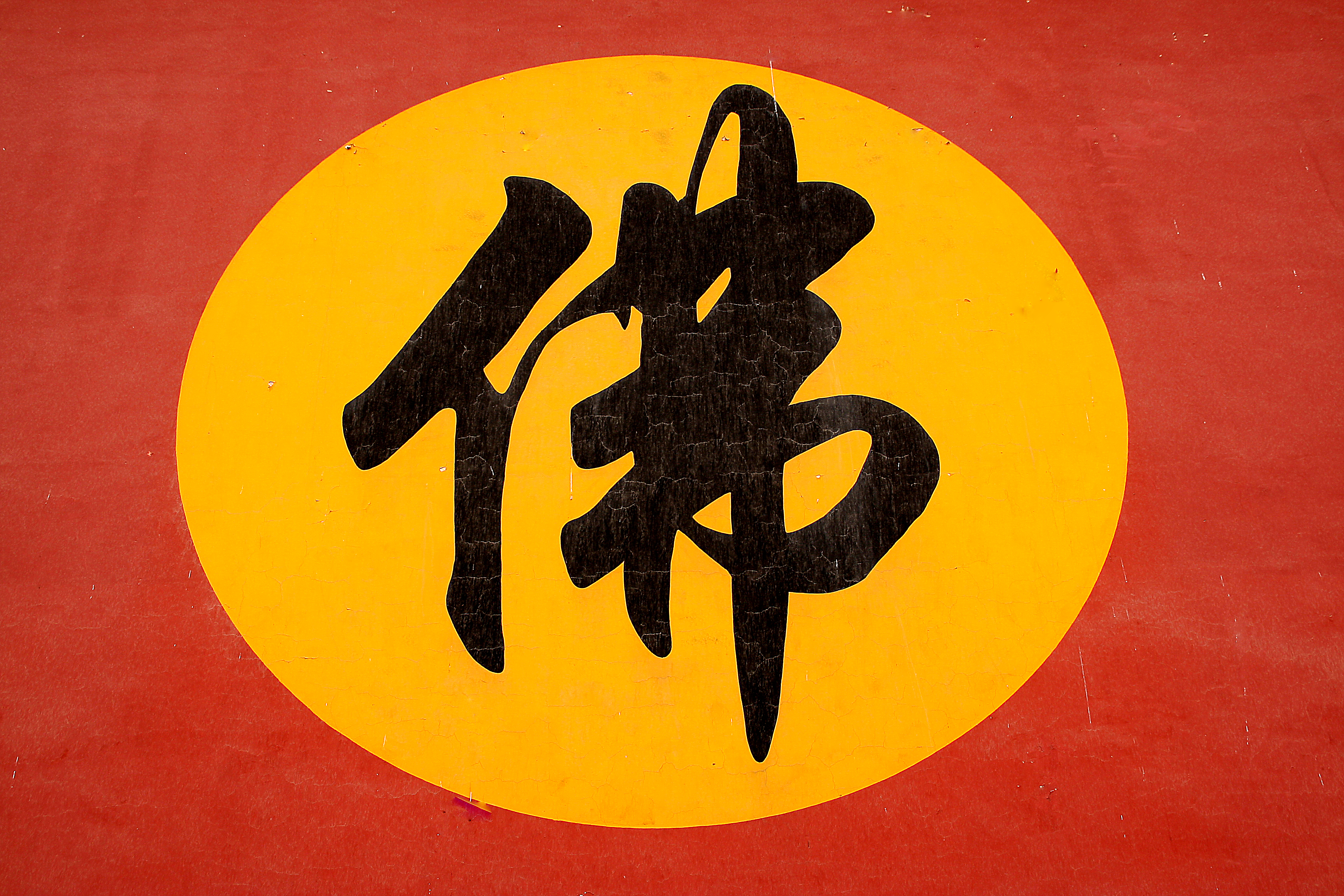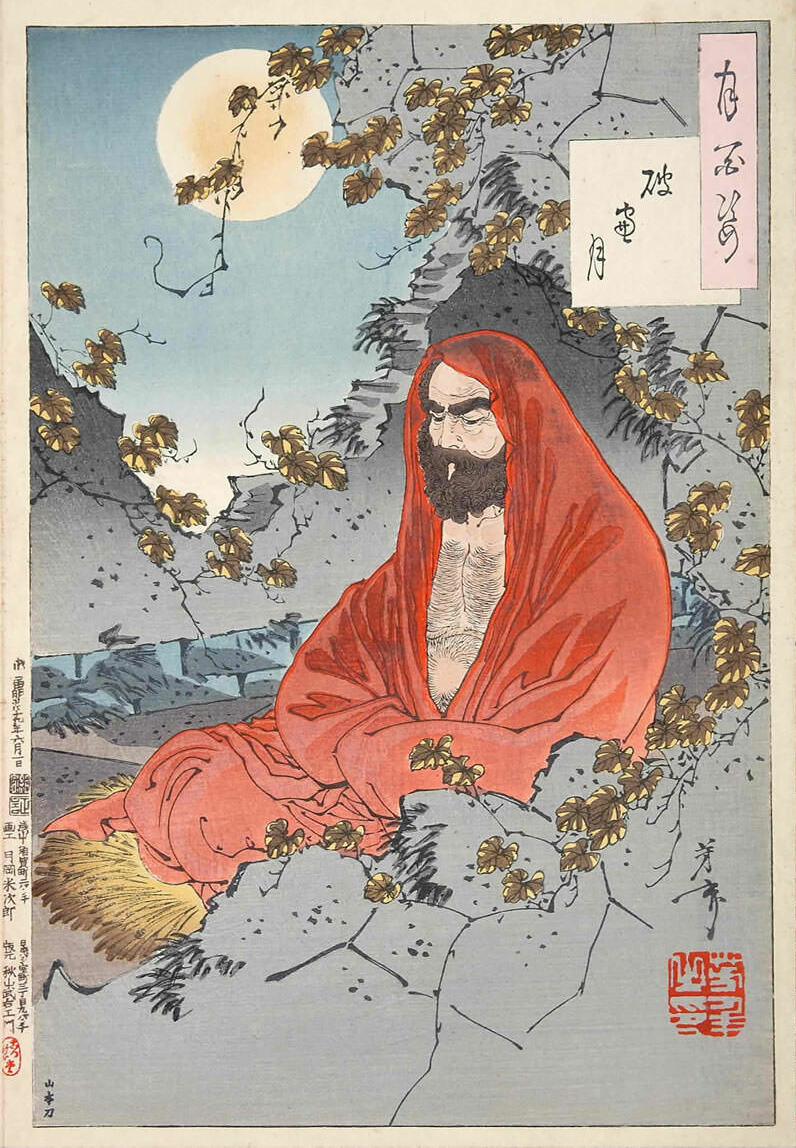|
Subitism
Sudden awakening or Sudden enlightenment (), also known as subitism, is a Buddhist idea which holds that practitioners can achieve an instantaneous insight into ultimate reality (Buddha-nature, or the nature of mind). This awakening is described as being attained "suddenly," "in one glance," "uncovered all together," or "together, completely, simultaneously," in contrast to "successively or being uncovered one after the other." It may be posited as opposite to gradualism, an approach which says that insight can be achieved only through a long gradual step by step process. Etymology The application of the term "subitism" to Buddhism is derived from the French '' illumination subite'' (sudden awakening), contrasting with 'illumination graduelle' (gradual awakening). It gained currency in this use in English from the work of sinologist Paul Demiéville. His 1947 work 'Mirror of the Mind' was widely read in the U.S. It inaugurated a series by him on subitism and gradualism. The Ch ... [...More Info...] [...Related Items...] OR: [Wikipedia] [Google] [Baidu] [Amazon] |
Chan Buddhism
Chan (; of ), from Sanskrit '' dhyāna'' (meaning " meditation" or "meditative state"), is a Chinese school of Mahāyāna Buddhism. It developed in China from the 6th century CE onwards, becoming especially popular during the Tang and Song dynasties. Chan is the originating tradition of Zen Buddhism (the Japanese pronunciation of the same character, which is the most commonly used English name for the school). Chan Buddhism spread from China south to Vietnam as Thiền and north to Korea as Seon, and, in the 13th century, east to Japan as Japanese Zen. History The historical records required for a complete, accurate account of early Chan history no longer exist. Periodisation The history of Chan in China can be divided into several periods. Zen, as we know it today, is the result of a long history, with many changes and contingent factors. Each period had different types of Zen, some of which remained influential, while others vanished. Andy Ferguson distinguishes thr ... [...More Info...] [...Related Items...] OR: [Wikipedia] [Google] [Baidu] [Amazon] |
Huayan School
The Huayan school of Buddhism (, Wade–Giles: ''Hua-Yen,'' "Flower Garland," from the Sanskrit "''Avataṃsaka''") is a Mahayana, Mahayana Buddhist tradition that developed in China during the Tang dynasty, Tang dynasty (618-907).Yü, Chün-fang (2020). ''Chinese Buddhism: A Thematic History'', p. 160. University of Hawaii Press. The Huayan worldview is based primarily on the ''Buddhāvataṃsaka Sūtra'' ( zh, t=華嚴經, p=Huáyán jīng, ''Flower Garland Sutra'') as well as on the works of Huayan patriarchs, like Zhiyan (602–668), Fazang (643–712), Chengguan (monk), Chengguan (738–839), Guifeng Zongmi, Zongmi (780–841) and Li Tongxuan (635–730). Another common name for this tradition is the Xianshou school (''Xianshou'' being another name for patriarch Fazang).Hammerstrom, Erik J. (2020). ''The Huayan University network: the teaching and practice of Avataṃsaka Buddhism in twentieth-century China'', chapter 1. Columbia University Press. The Huayan School is known ... [...More Info...] [...Related Items...] OR: [Wikipedia] [Google] [Baidu] [Amazon] |
Laṅkāvatāra Sūtra
The ''Laṅkāvatāra Sūtra'' (Sanskrit: लङ्कावतारसूत्रम्, "Discourse of the Descent into Laṅkā", , Chinese: 入楞伽經) is a prominent Mahayana Buddhist sūtra. It is also titled ''Laṅkāvatāraratnasūtram'' (''The Jewel Sutra of the Entry into Laṅkā,'' Gunabhadra's Chinese title: 楞伽阿跋多羅寶經 léngqié ābáduōluó bǎojīng) and ''Saddharmalaṅkāvatārasūtra'' (''The Sutra on the Descent of the True Dharma into Laṅkā''). A subtitle to the sutra found in some sources is "''the heart of the words of all the Buddhas''" (一切佛語心 yiqiefo yuxin, Sanskrit: ''sarvabuddhapravacanahṛdaya''). The ''Laṅkāvatāra'' recounts a teaching primarily between Gautama Buddha and a bodhisattva named Mahāmati ("Great Wisdom"). The sūtra is set in mythical Laṅkā, ruled by Rāvaṇa, the king of the rākṣasas. The ''Laṅkāvatāra'' discusses numerous Mahayana topics, such as Yogācāra philosophy of mind-only (' ... [...More Info...] [...Related Items...] OR: [Wikipedia] [Google] [Baidu] [Amazon] |
Buddhism
Buddhism, also known as Buddhadharma and Dharmavinaya, is an Indian religion and List of philosophies, philosophical tradition based on Pre-sectarian Buddhism, teachings attributed to the Buddha, a wandering teacher who lived in the 6th or 5th century Before the Common Era, BCE. It is the Major religious groups, world's fourth-largest religion, with about 500 million followers, known as Buddhists, who comprise four percent of the global population. It arose in the eastern Gangetic plain as a movement in the 5th century BCE, and gradually spread throughout much of Asia. Buddhism has subsequently played a major role in Asian culture and spirituality, eventually spreading to Western world, the West in the 20th century. According to tradition, the Buddha instructed his followers in a path of bhavana, development which leads to Enlightenment in Buddhism, awakening and moksha, full liberation from ''Duḥkha, dukkha'' (). He regarded this path as a Middle Way between extremes su ... [...More Info...] [...Related Items...] OR: [Wikipedia] [Google] [Baidu] [Amazon] |
Guifeng Zongmi
Guifeng Zongmi () (780–1 February 841) was a Tang dynasty Chinese Buddhist monk and scholar who is considered a patriarch of both the Huayan school and Chan Buddhism. Zongmi wrote a number of works on several Mahayana Sutras, Chan and Huayan, and he also discussed Taoism and Confucianism. His works are a major source for studying the various Chan schools of the Tang. Zongmi was deeply interested in both the practical and doctrinal aspects of Mahayana Buddhism, especially the teachings of the '' Sutra of Perfect Enlightenment'' and the '' Mahayana Awakening of Faith''. Zongmi's work is concerned with harmonizing the various Chan teachings (especially the doctrines of sudden awakening and original enlightenment) with other Chinese Buddhist traditions, especially Huayan, though he also drew on the work of Tiantai Zhiyi in his ritual works. His philosophy attempts to create a comprehensive worldview that includes and sublimates all Buddhist and non-buddhist teachings of his t ... [...More Info...] [...Related Items...] OR: [Wikipedia] [Google] [Baidu] [Amazon] |
Bodhidharma
Bodhidharma was a semi-legendary Bhikkhu, Buddhist monk who lived during the 5th or 6th century CE. He is traditionally credited as the transmitter of Chan Buddhism to China, and is regarded as its first Chinese Lineage (Buddhism), patriarch. He is also popularly regarded as the founder of Shaolin kung fu, an idea popularized in the 20th century, but based on the 17th century Yijin Jing and the Daoist association of ''daoyin'' gymnastics with Bodhidharma. Little contemporary biographical information on Bodhidharma is extant, and subsequent accounts became layered with legend and unreliable details. According to the principal Chinese sources, Bodhidharma came from the Western Regions, which typically refers to Central Asia but can also include the Indian subcontinent, and is described as either a "Persians, Persian Central Asian" or a "South Indian [...] the third son of a great Indian king." Aside from the Chinese accounts, several popular traditions also exist regarding Bodhi ... [...More Info...] [...Related Items...] OR: [Wikipedia] [Google] [Baidu] [Amazon] |
Linji School
The Línjì school () is a school of Chan Buddhism named after Linji Yixuan (d. 866). It took prominence in Song dynasty, Song China (960–1279), spread to Japan as the Rinzai school and influenced the nine mountain schools of Korean Seon. History Five Dynasties and Ten Kingdoms Period (907–960/979 CE) Before the Song dynasty, the Linji school was rather obscure and very little is known about its early history. The Five Dynasties and Ten Kingdoms period () (907–960/979 CE) was an era of political upheaval between the fall of the Tang dynasty and the founding of the Song. During this period, five dynasties quickly succeeded one another in the north, and more than twelve independent states were established, of which only ten are traditionally listed. This division into various regions and kingdoms led to a diversification of Chan factions, reflected in the Five Houses of Chán. The Fayan school was especially influential in the Southern Tang (937-975) and Wuyue (907-978 ... [...More Info...] [...Related Items...] OR: [Wikipedia] [Google] [Baidu] [Amazon] |
Enlightenment In Buddhism
The English term ''enlightenment'' is the Western translation of various Buddhist terms, most notably ''bodhi'' and ''vimutti''. The abstract noun ''bodhi'' (; Sanskrit: बोधि; Pali: ''bodhi'') means the knowledge or wisdom, or awakened intellect, of a Buddha. The verbal root ''budh-'' means "to awaken", and its literal meaning is closer to awakening. Although the term '' buddhi'' is also used in other Indian philosophies and traditions, its most common usage is in the context of Buddhism. ''Vimutti'' is the freedom from or release of the fetters and hindrances. The term ''enlightenment'' was popularised in the Western world through the 19th-century translations of British philologist Max Müller. It has the Western connotation of general insight into transcendental truth or reality. The term is also being used to translate several other Buddhist terms and concepts, which are used to denote (initial) insight ('' prajna'' (Sanskrit), '' wu'' (Chinese), '' kensho'' and ... [...More Info...] [...Related Items...] OR: [Wikipedia] [Google] [Baidu] [Amazon] |
Subitizing
Subitizing is the rapid, accurate, and effortless ability to perceive small quantities of items in a set, typically when there are four or fewer items, without relying on linguistic or arithmetic processes. The term refers to the sensation of instantly knowing how many objects are in the visual scene when their number falls within the subitizing range. Sets larger than about four to five items cannot be subitized unless the items appear in a pattern with which the person is familiar (such as the six dots on one face of a die). Large, familiar sets might be counted one-by-one (or the person might calculate the number through a rapid calculation if they can mentally group the elements into a few small sets). A person could also estimate the number of a large set—a skill similar to, but different from, subitizing. The term subitizing was coined in 1949 by E. L. Kaufman et al., and is derived from the Latin adjective '' subitus'' (meaning "sudden"). The accuracy, speed, and confi ... [...More Info...] [...Related Items...] OR: [Wikipedia] [Google] [Baidu] [Amazon] |
Shenhui
Heze Shenhui (Chinese:菏澤神會/菏泽神会; Wade–Giles: Shen-hui; Japanese: Kataku Jinne, 684–758) was a Chinese Buddhist monk of the so-called "Southern School" of Zen, who "claimed to have studied under Huineng." Shenhui is notable for his strident attacks on Yuquan Shenxiu and the associated "Northern School", which was the most prominent branch of Chan Buddhism in China at the time. He accused them of propagating ''gradual teachings'', as opposed to his own ''sudden teachings''. Shenhui's own lineage, called the Heze lineage (菏澤宗), probably died out around the time of the Great Anti-Buddhist Persecution in 845, with Guifeng Zongmi being the only notable monk in the lineage. Biography Shenhui was born in Xiangyang with the surname Gao (高). He learned The Five Classics of Confucius and the philosophy of Laozi and Zhuangzi at a young age. At the age of 14 he became a monk under Huineng, a disciple of Hongren and the founder of the Southern School of Z ... [...More Info...] [...Related Items...] OR: [Wikipedia] [Google] [Baidu] [Amazon] |
Tao-Sheng
Daosheng (; c. 360–434), or Zhu Daosheng (), was an eminent Six Dynasties era Chinese Buddhist scholar. He is known for advocating the concepts of sudden enlightenment and the universality of the Buddha nature. Life Born in Pengcheng, Daosheng left home to become a monk at eleven. He studied in Jiankang under Zhu Fatai, and later at Lushan (Mount Lu) monastery with Huiyuan, and from 405 or 406 under Kumarajiva in Chang'an, where he stayed for some two years perfecting his education. He became one of the foremost scholars of his time, counted among the "fifteen great disciples" of Kumarajiva. Sengzhao reports that Daosheng assisted Kumarajiva in his translation of the Lotus Sutra, Daosheng wrote commentaries on the Lotus Sutra, the Vimalakirti-nirdesa Sutra and the Astasahasrika-prajnaparamita Sutra (the last of which has been lost). In 408, he returned to Lushan, and in 409 back to Jiankang, where he remained for some twenty years, staying at the Qingyuan Monastery ... [...More Info...] [...Related Items...] OR: [Wikipedia] [Google] [Baidu] [Amazon] |
Buddha-nature
In Buddhist philosophy and soteriology, Buddha-nature ( Chinese: , Japanese: , , Sanskrit: ) is the innate potential for all sentient beings to become a Buddha or the fact that all sentient beings already have a pure Buddha-essence within themselves.Heng-Ching ShihThe Significance Of 'Tathagatagarbha' – A Positive Expression Of 'Sunyata'/ref> "Buddha-nature" is the common English translation for several related Mahāyāna Buddhism, Buddhist terms, most notably ''tathāgatagarbha'' and ''buddhadhātu'', but also ''sugatagarbha,'' and ''buddhagarbha''. ''Tathāgatagarbha'' can mean "the womb" or "embryo" (''garbha'') of the "thus-gone one" (''Tathagata, tathāgata''), and can also mean "containing a ''tathāgata''"''. Buddhadhātu'' can mean "buddha-element", "buddha-realm", or "buddha-substrate". Buddha-nature has a wide range of (sometimes conflicting) meanings in Indian Buddhism and later in East Asian Buddhism, East Asian and Tibetan Buddhism, Tibetan Buddhist literatur ... [...More Info...] [...Related Items...] OR: [Wikipedia] [Google] [Baidu] [Amazon] |





